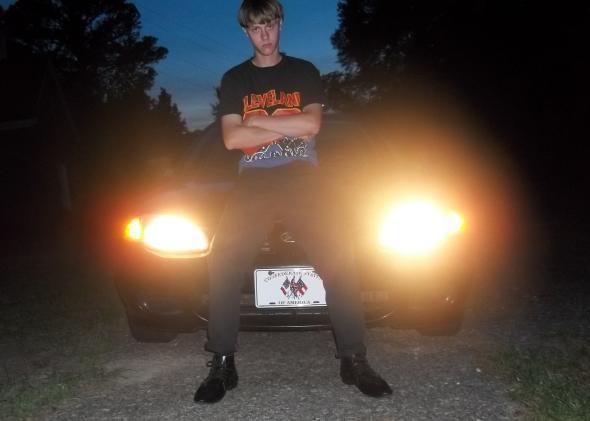For those who spend their days poring over racist writings, the manifesto purportedly written by Dylann Roof that was uncovered online on Saturday is short on surprises. Throughout the 2,444-word screed, Roof expounds on some of the more common themes in white supremacist thought, echoes that suggest he has spent a lot of time reading racist websites.
Yet at several points Roof also appears to make it clear that reading and browsing websites is really all he had done in advance of his alleged murder of nine people in a historically black church in Charleston, South Carolina, showing no hints that he ever tried to contact any white supremacists in person or engaged in one-on-one discussions with anyone who may share his views.
“It’s typical for someone who has become radicalized and identifies with a particular movement but has not been in the movement long enough to learn all of the language, all the concepts, all the accepted wisdom so to speak,” explained Mark Pitcavage, director of the Anti-Defamation League’s Center on Extremism, in a brief phone conversation hours after the manifesto first came to light. For Pitcavage, the manifesto reveals Roof as a self-taught loner. “He was very much on the periphery of the white supremacist movement, he wasn’t going to rallies or events,” he says. “He wasn’t interacting with people.”
Yet Roof wasn’t exactly a newbie, either. In the alleged manifesto, Roof says his interest in white supremacy began shortly after the 2012 killing of Trayvon Martin. “He’s had years of digging around in this world, enough to form these opinions,” explains Stephen Piggott, campaign coordinator at the Southern Poverty Law Center.
The author of the manifesto writes that he first explored white supremacist views on the website of the Council of Conservative Citizens, where “there were pages upon pages of these brutal black on white murders.” That the CCC was Roof’s gateway to heinous thought hardly surprises the SPLC, considering how the site had a huge spike in traffic shortly after the Trayvon Martin shooting. “The CCC dedicates itself to educating whites on what it sees as an epidemic of black on white crime in the United States,” notes the SPLC in a blog post. “The CCC website has been a touchstone for the radical right to get ‘educated’ on this issue—and it appears this was the first stop for Roof on his dive down the white nationalist rabbit hole.”
There is one passage of the manifesto, however, that stands out as deviating from typical white supremacist tropes: one concerning Roof’s views on Jews. He even appears to recognize his views aren’t standard. “Unlike many White naitonalists, I am of the opinion that the majority of American and European jews are White,” Roof writes.
“This is where he differs the most from standard white supremacists,” explains Pitcavage. “Most white supremacists think Jews are a different race, he doesn’t.”
For the SPLC’s Piggott, though, Roof’s thoughts on Jews prove just how well-versed he is in white supremacist thought. “The Jewish question is one of the most divisive issues in white nationalistic groups and some of the more intellectual white nationals won’t even touch the issue,” explains Piggott. Although they’re certainly in the minority, there are some white supremacists who don’t particularly see Jews as an enemy, and some may even see them as potential allies, as Roof appears to do. Roof also writes about his “great respent [sic] for the East Asian races,” which is an example of how there is often a “grudging respect for Asians, particularly Chinese or Japanese” among white supremacists, notes Pitcavage.
Another example of how tapped in the author of the manifesto is to white nationalist thought is a reference to Europe and how “the same things were happening in England and France, and in all the other Western European countries.” In recent years there’s been increased contact between American supremacists and their European counterparts, who now talk about “a transatlantic struggle” by whites. “It’s yet another indicator that he’s well-educated in the radical right and the pressing issues of the day,” notes Piggott.
Yet as much as Roof may be well-versed in white nationalist thought, he still doesn’t appear to have seen himself as part of a larger movement. “This vision he has of himself as a lone warrior is implied in the name he gives to his website,” which was titled “Last Rhodesian,” notes Pitcavage. Of course, Roof doesn’t portray himself as much of a warrior, considering this sentence: “I am not in the position to, alone, go into the ghetto and fight.”
In other words, Roof didn’t want to go anywhere someone could fight back. Instead, he chose to open fire in a church.
